|
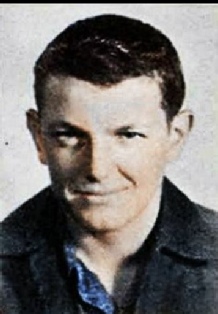
|
Michael Bruce Keen - Officer
Muldrow Police Department June 23, 1982
Shortly after 11 p.m. on Wednesday, June 23, 1982, Officer Michael Keen, and his partner Officer Donald Wayne Edwards set up a roadblock on SH – 64-B in Muldrow in an attempt to stop a stolen Chevrolet Camaro being pursued by officers from Roland, Sallisaw and the Sequoyah County Sheriff’s Office. The stolen Camaro did not slow for the roadblock and got around it as the two Muldrow officers fired shots at it. The stolen Camaro was being followed closely by Sallisaw Officer Steven L. Boy. Officer Steven Boy attempted to avoid the Muldrow Police unit and struck Officer Michael Keen knocking him into Officer Donald Edwards and against a guardrail. Officer Michael Keen was pronounced dead at the scene dying less than an hour before his thirty-third birthday.
Officers Wayne Edwards and Steven Boy were both treated at a local hospital.
Officer Michael Keen was survived by his wife and two children and is buried in Liberty Cemetery, Roland, Sequoyah County, Oklahoma.
OLEM – 2N-1-23 NLEOM – 45W17
Updated October 30, 2023
|
|
|
|
|
|
Asa Lincoln Keeney - Deputy U.S. Marshal
U. S. Marshal Service November 23, 1894
“Lincoln” Keeney was a blacksmith by trade and ran a blacksmith shop in Miami, Indian Territory, which laid just inside the Ottawa Reservation. “Lincoln” Keeney was appointed a Deputy U.S. Marshal for the District of Kansas by U.S. Marshal S. F. Neely.
In late November of 1894, Deputy Marshal “Lincoln” Keeney arrested Bill West, a Cherokee citizen, on a warrant for attempted murder in the Cherokee Nation, Indian Territory. However, Bill West managed to get out of his handcuffs and escaped custody.
A few days later, on Friday, November 23, Bill West and his brother Kinch West, Jr. rode up behind Deputy Marshal “Lincoln” Keeney as he was working in his blacksmith shop in Miami, and fatally shot Deputy Marshal “Lincoln” Keeney in the head with their rifles killing him instantly. Bill West and Kinch West then rode out of town threating to kill anyone who followed them.
Deputy Marshal “Lincoln” Keeney, 34, was survived by his wife Francis and four childrn and is buried in Bluejacket Cemetery, Bluejacket, Craig County, OK.
Bill West was arrested in January 1895 by deputy marshals out of the Western District of Arkansas and turned over to the U.S. Marshal in Fort Scott, Kansas. On March 25, 1896, Bill West and five other prisoners escaped from jail.
On February 27, 1896, Bill West was arrested in Sioux Falls, South Dakota and brought back to Kansas and locked in the Shawnee County jail in Topeka from which he escaped on April 28th.
Bill West was located at a cousin’s house near Illinois, Indian Territory on June 14th and was killed in the ensuing shootout with deputy marshals.
Kinch West, Jr. had also been arrested but died in the Fort Scott prison in January 1896 awaiting trial for killing Deputy U.S. Marshal “Lincoln” Keeney.
OLEM – 9N-2-6 NLEOM – 36W13
Updated October 30, 2023
|
|
|
|
|
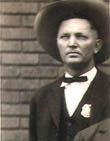
|
James Daniel "Jim" Keirsey - Officer
Seminole Police Department November 7, 1929
About 8 p.m. the evening of Thursday, November 7, 1929, Officer James Keirsey was one of four officers who surrounded the home of Sam and Ruth Dyer in Harjo where a group of bank robbers were suspected to be hiding out. Officer James Keirsey and State Crime Bureau Agent Claude Tyler covered the back door, Seminole Police Chief Jake Sims going to the front door and Seminole County Deputy Sheriff George Hall covered the side of the house.
Chief Jake Sims was met at the front door by Owen Edwards and the two men started firing their guns at each other. Owen Edwards, wounded in one shoulder, then ran for the back door. Agent Claude Tyler had taken Sam and Ruth Dyer into custody and Officer James Keirsey had stepped in the back door with his gun drawn. When Owen Edwards saw Officer James Keirsey, he opened fire on him with his two .45 caliber automatic pistols, hitting Officer James Keirsey numerous times, killing him. Officer James Keirsey was able to return two shots before dying. Chief Jake Sims and Agent Claude Tyler then shot and killed Owen Edwards.
Officer James Keirsey, 41, was survived by his wife and three children and is buried in Highland Cemetery, Durant, Bryan County, Oklahoma.
A year later Officer James Keirsey’s brother, William Con Keirsey, would also die in the line of duty as a law enforcement officer.
OLEM – 8S-4-9 NLEOM – 36W18
Updated October 30, 2023
|
|
|
|
|

|
William Conway "Con" Keirsey - Deputy Sheriff
Carter County Sheriff’s Office December 11, 1930
About 5:30 p.m. on Wednesday, December 10, 1930, Deputy Sheriff William “Con” Keirsey, 34, and Undersheriff Vernon D. Cason went to Wirt to check on a stolen car. The officers soon located the car in front of a three-room shack. There were two apartments. As Undersheriff Vernon Cason entered one apartment, Deputy Sheriff “Con” Keirsey was admitted into the other apartment by an elderly woman. Deputy Sheriff “Con” Keirsey observed several women and children and one man in the room. When Deputy Sheriff “Con” Keirsey asked about the car out front, a second man, that Keirsey had not seen laying under some covers on a bed in the corner of the room, rose holding two guns on the deputy sheriff. The first man then drew a gun also. Undersheriff Vernon Cason then entered the room and was shot in the abdomen by one of the men, Colquitt Davis, 19. Undersheriff Vernon Cason returned fire hitting the other man, D. I. Davis, 21, twice. Deputy Sheriff “Con” Keirsey then jumped on the already-wounded D. I. Davis. During the struggle, Deputy Sheriff William “Con” Keirsey was shot in the chin. The bullet ranged downward, severing his windpipe, and passing through his left lung before lodging in his back. The Davis brothers then fired two more shots at the fallen Undersheriff Vernon Cason, but the shots only grazed his neck. The Davis brothers then left in Deputy Sheriff “Con” Keirsey’s county car.
Undersheriff Vernon Cason survived his wounds, but Deputy Sheriff William “Con “Keirsey died the next morning, December 11th.
Deputy Sheriff William “Con” Keirsey was survived by his wife Vella and their six children and was buried in Rose Hill Cemetery, Ardmore, Carter County, Oklahoma on December 12th.
That same day D. I. Davis was killed in a shootout with police officers in Wichita, Kansas.
Colquitt Davis was arrested two days later in Hereford, Texas. He was found guilty of Deputy Sheriff William “Con” Keirsey’s murder and sentenced to life in prison.
Deputy Sheriff William “Con” Keirsey’s older brother James Keirsey died in the line of duty the year before.
OLEM – 8S-4-10 NLEOM – 63E19
Updated October 30, 2023
|
|
|
|
|
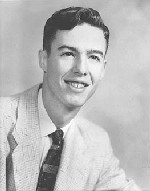
|
William Haskell Keith - Officer
Del City Police Department January 19, 1965
At 10:53 p.m. on Tuesday, January 12, 1965, Sergeant John Dickinson, 42, and his rookie partner Officer William Keith, 26, became involved in a high-speed vehicle pursuit south on Sunnylane Road in Del City. During the pursuit Sergeant John Dickinson had fired several gunshots at the fleeing vehicle with his revolver and shotgun while Officer William Keith drove. The pursuit continued south on Sunnylane Road into Oklahoma City. Near Southeast 74th Street the police car went out of control, hit a telephone pole at an estimated eighty miles per hour and rolled over into a ditch injuring both officers. The speeding vehicle being pursued kept going.
Harry Kenneth Turoczi, 19, was arrested the next day and charged with eluding police and several other charges.
Officer William Keith died of his injuries a week later at 1:20 a.m. on Tuesday, January 19, his thirty-third day as a police officer.
Officer William Keith was survived by his wife Carolyn and their three young children and is buried in Resthaven Gardens Cemetery, Oklahoma City, Cleveland County, Oklahoma.
Sergeant John Dickinson survived his injuries.
OLEM – 7N-4-18 NLEOM – 51W12
Updated January 16, 2024
|
|
|
|
|
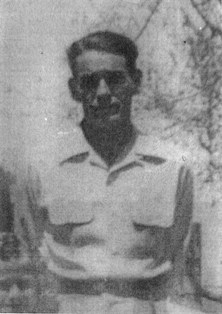
|
Ernest H. Keller - Chief
Drumright Police Department August 10, 1916
About 10:00 p.m. on Thursday, August 10, 1916, Chief Ernest Keller, 35, and Deputy Jim Rippey were investigating the robbery of two employees of the Prairie Oil and Gas Company, near the slaughterhouse. The two officers started walking down the Santa Fe Railroad tracks. After going only about fifty feet the officers encountered two men walking toward them. Chief Ernest Keller called out to the men to stop when one of them drew a pistol, shooting Chief Ernest Keller fatally. Deputy Rippey emptied his gun at the men as they ran away.
After Deputy Rippey determined that Chief Ernest Keller was dead he went after the two men with a rifle he borrowed from a nearby house. Deputy Rippey caught one man after wounding him. The second man was arrested at his home near the scene.
It soon came to light that the whole affair was a tragic mistake. The wounded man, J. W. Miller, and the other man, R. C. Aubrey were employed by the same company as the robbery victims who had told them of their robbery. When the two officers approached them on the tracks in the dark and Chief Ernest Keller called out for them to stop, they assumed they were the robbers and opened fire on them. J. W. Miller survived his wounds.
Chief Ernest Keller was survived by his wife Ida and is buried in Oaklawn Cemetery, Tulsa, Tulsa County, Oklahoma.
OLEM – 3S-2-12 NLEOM – 48W27
Updated August 10, 2023
|
|
|
|
|

|
Ervin A. "Erv" Kelley - Special Agent
Oklahoma Bankers Association April 9, 1932
Ervin A. Kelley was perhaps the most respected law enforcement officer in eastern Oklahoma during his time. Ervin Kelley had served as Chief of Police of Checotah from 1921 to 1925. In 1925 he was elected Sheriff of McIntosh. In January of 1932, Ervin Kelley retired after serving six years as Sheriff of McIntosh County. Ervin Kelley was then hired as a Special Agent by the Oklahoma Bankers Association for the express purpose of hunting down and arresting bank robber Charles Arthur “Pretty Boy” Floyd. The bankers presented Ervin Kelley with a new Thompson submachine gun.
Special Agent Ervin Kelley began a three-month investigation that led him to Charles Floyd’s wife, Ruby, in Tulsa. Special Agent Ervin Kelley placed Mrs. Charles Floyd under surveillance. On Friday, April 8, 1932, Ruby Floyd drove to her father’s farm, three miles west and three quarters of a mile south of Bixby in Tulsa County, to meet her outlaw husband. Special Agent Ervin Kelley and an eight-man posse that included State Crime Bureau Agent Crockett Long quietly surrounded the farm. Special Agent Ervin Kelley was concealed near the front of the house with his submachine gun with a twenty-one-round clip, a silencer, and a .38 caliber pistol. At 2:25 a.m. on the morning of Saturday, April 9, a green Chevrolet occupied by Charles Floyd and his partner George Birdwell drove up to the farm. The other officers soon heard several pistol shots and saw the green Chevrolet drive off. When the officers checked they found Special Agent Ervin Kelley dead. He had been wounded five times with a .45 caliber gun, once under his right arm, twice in the left side and in both knees. Special Agent Ervin Kelley had fired a fourteen-round burst from his submachine gun as he fell wounding Charles “Pretty Boy” Floyd in his right leg and left ankle. The silencer on the machine gun prevented his posse from hearing the shots and delayed their response.
Special Agent Ervin Kelley was survived by his wife Dessa Minnie (Cromer), and their five surviving children Edna K., 22, Donald L., 21, Marie, 19, John Lee, 15, and Ervin Andrew, 10.
Ervin Kelley was buried in Greenlawn Cemetery, Checotah, McIntosh County, Oklahoma, next to their daughter, Lelia Francis, who died at the age of two in 1916.
OLEM – 8S-5-10 NLEOM –
Updated December 27, 2023
|
|
|
|
|
|
Sam Kelley
Engraved on Oklahoma Peace Officers Memorial in 1969 as a Deputy Sheriff under years 1918 – 1927. No record found of an officer by this name who died in this time period.
OLEM – 8S-3-12
Believed to be mistakenly engraved from information for City Marshal of Pershing / Osage County Deputy Sheriff James Samuel Shelley who died in the line of duty on May 11, 1921, whose name is engraved on the memorial at 9S-3-3.
Updated July 3, 2024
|
|
|
|
|
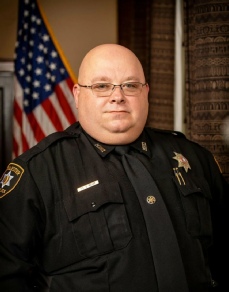
|
William Daniel “Danny” Kelley – Master Patrolman
McAlester Police Department January 30, 2022
William “Danny” Kelley was born September 15, 1973, in McAlester, Oklahoma to William Henry “Sonny” and Patricia Ann (Leadford) Kelley. Danny lived most of his life in McAlester graduating from McAlester High School in 1992. Danny Kelley worked various jobs before completing the COPS program at Eastern Oklahoma State Collage. Danny Kelley began his law enforcement career as a reserve officer for the Krebs Police Department. In 2000 Danny went to work as a Deputy Sheriff for the Pittsburg County Sheriff’s Office and served there until 2009 when he joined the McAlester Police Department. Danny served as a Patrolman for the McAlester Police Department for thirteen years. Danny was a firearms instructor, rifle instructor, lever action rifle instructor, taser instructor, LEDT instructor. Danny Kelley often volunteered at CLEET to help with the firearms portion and LEDT portion of their academies. While he enjoyed teaching both, firearms were his passion.
On January 14, 2022, Officer William “Danny” Kelley was diagnosed with the Covid-19 virus. Danny’s covid symptoms were mild the first five days, then on January 20th his condition got worse. Danny Kelley, 48, was admitted to the McAlester Regional Health Center on January 23rd and was placed on a ventilator in the intense care unit (ICU) the next day. For the next six days Danny Kelley was treated for the Covid virus. Danny Kelley was waiting to be transferred to a hospital in Tulsa with an ECMO machine when he died the evening of Sunday, January 30, 2022.
Master Patrolman William “Danny” Kelley was survived by his wife Shelley and son, William “Grant” Kelley.
William “Danny” Kelley’s earthly remains were cremated, and his ashes buried at Hugh Low Cemetery, Scipio, Pittsburg County, Oklahoma.
OLEM – 10S-3-19 NLEOM – 53W34
Updated December 28, 2023
|
|
|
|
|
|
William Kelly - Posse, Deputy U.S. Marshal
U.S. Marshal Service January 17, 1887
On Monday, January 17, 1887, four lawmen, Deputy U.S. Marshal John Phillips and his three posse, William Kelly, Mark Kuykendall, and Henry Smith, were making a sweep of the Indian Territory serving numerous arrest warrants and had arrested Seaborn Green (also known as Kalijah) an eighteen-year-old Creek Indian who was wanted on a federal warrant for selling whiskey in the Indian Territory. After the arrest, the lawmen established a campsite near Hillabee (twenty miles northwest of Eufaula near present Stidham), I.T. Deputy Marshal John Phillips left his three posse in charge of Seaborn Green while he returned to Eufaula on business.
The three possemen agreed to take turns watching the prisoner during the night. William Kelly drew the first watch. Sometime during the night, either Posse William Kelly fell asleep or was surprised by Seaborn Green who had obtained the camp axe. Posse William Kelly was struck in the neck by the axe, with his head almost severed. Seaborn Green then used the axe on Posse Mark Kuykendall and Posse Henry Smith striking them both in the head killing them. Seaborn Green then piled logs around the bodies and set fire to the bed clothing and logs to burn the bodies.
The following day Deputy Marshal John Phillips returned to the gruesome site at the camp. His entire posse was dead, and Seaborn Green was gone. Deputy Marshal John Phillips discovered that all weapons had been taken from the camp. Deputy Marshal John Phillips buried his fellow lawmen near the campsite and then went in search of Seaborn Green.
For the next eleven days Deputy Marshal John Phillips looked for Seaborn Green. Deputy Marshal Phillips finally located and arrested Seaborn Green on January 28th. Seaborn Green tried to claim it was an unknown person who had entered the camp and killed the three posse. At his trial held in Fort Smith on July 13, 1887, Seaborn Green was found guilty of three counts of murder after he admitted he had committed all three murders alone. Seaborn Green was sentenced to death by hanging and the sentence was carried out on October 7, 1887, when he was hung on the U.S. Courthouse property.
The exact original burial site of Posses William Kelly, Mark Kuykendall, and Henry Smith, near present day Stidham is unknown however at some point the body of Posse William Kelly was disinterred and buried in the Buffington Cemetery, Sallisaw, Sequoyah County, Oklahoma.
William Kelly, who lived in Fort Smith, Arkansas, was survived by his wife to whom he had been married only a short time.
Mark Kuykendall lived in Yell County, Arkansas and Henry Smith lived in the Indian Territory.
OLEM – 4S-1-6 NLEOM – 15E17
Updated January 8, 2024
|
|
|
|
|
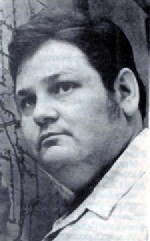
|
John Henry Kerr - Officer
Picher Police Department March 18, 1987
The evening of Wednesday, March 11, 1987, Officer John Kerr, and his partner, Reserve Officer Greg Sweeten, became involved in a high-speed pursuit of a 1976 Chevrolet pickup truck headed south out of the city of Picher. The pursuit proceeded about eight miles before Officer John Kerr lost control of the police unit and it veered off State Highway 137 and smashed into a culvert about three miles south of Quapaw.
Officer Greg Sweeten sustained minor injuries. Officer John Kerr suffered serious back injuries but were not thought to be life threating. John Kerr spent a week in St. John Hospital in Tulsa, and then took a turn for the worse. Apparently, a blood clot had formed, and John Kerr died the evening of Wednesday, March 18, three days before his forty-first birthday.
Officer John Kerr was survived by his wife Carol, a son, a daughter plus a stepson and stepdaghter and is buried in Golden Cemetery, Golden, Jefferson County, Colorado.
The driver of the pursued pickup, Jerry Buchanan, Jr., 18, was arrested later and charged with several misdemeanor and felony charges connected to the pursuit.
OLEM – 2N-2-18 NLEOM – 3W10
Updated July 3, 2024
|
|
|
|
|
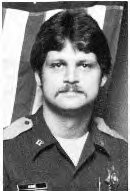
|
Carl Vance "Poncho" Kime Jr. - Canine Officer
Tulsa Police Department November 5, 1979
About 2 a.m. on Monday, November 5, 1979, while on routine patrol Officer Carl Kime, 29, observed an open door on the Sooner Insurance Merchandise business at 5710 E. 11th St. Officer Carl Kime, twenty-nine, and his German Shepard canine partner “Smokey” entered the open door to search for possible burglars.
Retired Oklahoma Highway Patrol Trooper Herbert Hellen was working as a security guard for the business that night and only minutes earlier had chased two burglars from the store. Apparently Herbert Hellen thought they were returning when he saw a silhouetted figure at the door of the office he was in using the telephone. Herbert Hellen fired at the figure with a .12-gauge shotgun from about thirty-five feet away. Most of the buckshot hit Officer Carl Kime in the neck and left side killing him. “Smokey” crawled on top of his mortally wounded handler and held police at bay until other canine officers arrived and were able to coax “Smokey” away.
Officer Carl Kime was survived by his wife, Kathleen and two daughters ages 1 and 4 and is buried in Floral Haven Memorial Gardens Cemetery, Broken Arrow, Tulsa County, Oklahoma.
No criminal charges were brought against retired Trooper Herbert Hellen.
OLEM – 2N-1-9 NLEOM – 38W7
Updated October 30, 2023
November 5, 2022
|
|
|
|
|
|
William Gene "Billy" Kirby - Chief
Jay Police Department November 23, 1974
Bill Kirby was born March 3, 1932, in Jay, Delaware County, Oklahoma to Alonzo Lon and Crystal E. (Mahan) Kirby. Bill Kirby served in the Korean War and became Chief of the Jay Police Department in 1971.
Shortly after noon on Saturday, November 23, 1974, Chief Bill Kirby, 42, arrested Max Sharp, thirty-nine, for public drunkenness. As Max Sharp was being taken into jail, he began fighting with Chief Bill Kirby and Deputy Sheriff Frank Jackson. The two officers struggled with their prisoner Max Sharp up three flights of stairs. Just as Chief Bill Kirby, placed Max Sharp into a jail cell, Chief Kirby collapsed and died from a heart attack.
Chief Bill Kirby was survived by his wife and two daughters and is buried in Mount Hermon Cemetery, Jay, Delaware County, Oklahoma.
Max Sharp was charged with first degree manslaughter in Chief Bill Kirby’s death.
OLEM – 10N3-1 (William Kirby) NLEOM –
Updated November 20, 2023
|
|
|
|
|
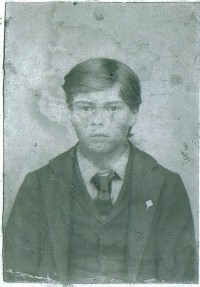
|
George "Johnson" Kirk - Deputy Constable
City of Braggs June 18, 1909
On Friday, June 18, 1909, three men attempted to rob the crew of a railroad train as it pulled away from Illinois Station four miles from Braggs in Muskogee County. When shots were exchanged between the trainmen and the robbers, the robbers jumped off the train and the train pulled away. As the train passed nonstop through Braggs, one of the crewmen threw a note onto the depot platform telling of the attempted robbery. Braggs Constable Wicks was on the platform, read the note and summoned Deputy Constable “Johnson” Kirk. Following directions on the note the officers went to the location where the robbers jumped off the train and quickly located the three men hiding in some woods. As the officers approached the three men, one of them slashed Constable Wicks on the arm with a razor and another fatally shot Deputy Constable “Johnson” Kirk in the head. Constable Wicks was able to shoot and capture one of the men, Paul Williams, but the other two escaped.
Deputy Constable George “Johnson” Kirk, twenty-two, was survived by his wife Annie and two-year-old son Conrad and is buried in South Bethel Cemetery, Braggs, Muskogee County, Oklahoma.
OLEM – 9S-1-8 NLEOM – 61W26
Updated June 17, 2024
|
|
|
|
|
|
John T. Kirk - City Marshal
City of Marble City October 2, 1911
Just after midnight on Sunday, October 1, 1911, City Marshal John Kirk, fifty-three, ordered a group of men involved in a drunken brawl to disperse and go home or he would arrest them. The “rowdies” turned on the unarmed city marshal and beat him “insensible” with clubs. City Marshal John Kirk died of his injuries thirty hours later at 6 a.m. Monday morning, October 2nd. Six men were arrested for the killing of City Marshal John Kirk.
City Marshal John T. Kirk was survived by his wife Minnie and six children aged twenty-seven to eight years of age and is buried in Marble City Cemetery, Marble City, Sequoyah County, Oklahoma.
OLEM – 10S-2-10 (T John) NLEOM –
Updated September 20, 2023
|
|
|
|
|
|
William "Bill" Kirksey - Deputy U.S. Marshal/Posseman
U.S. Marshal Service May 1, 1885
Joe Henderson leased land in the Chickasaw Nation. On Wednesday, March 18, 1885, Joe Henderson found that two of his horses had been stolen and he believed he knew the thieves. Joe Henderson traveled to Fort Smith, Arkansas to report the theft of the horses. Arrest warrants were issued for two brothers, Jim, and Tom “Pink” Lee. The warrant was turned over to Deputy U. S. Marshal James H. Guy, who also was a Sergeant with the U.S. Indian Police.
A murder warrant had also been issued for a black man named Dallas Humby and Deputy Marshal James Guy had information that Dallas Humby might also be at the Lee ranch. Dallas Humby was accused of killing his wife and had avoided apprehension earlier. Deputy Marshal James Guy was anxious to make the arrest.
\
On Friday, May 1, 1885, Deputy Marshal James Guy gathered a posse of thirteen men, including William “Bill” Kirksey and brothers James L. “Jim” and Andrew C. “Andy” Roff. The posse proceeded to the Lee ranch near Dresden (now Gene Autry) a small-town northeast of Ardmore.
After dismounting, the officers surrounded the Lee home. Deputy U.S. Marshal James Guy called out for the Lee’s to come out of the house to answer warrants. Someone inside the house asked who it was and for them to come to the front of the house where they could talk. Deputy Marshal James Guy walked to the front of the house and stood by a tree.
\
The posse was immediately met by gunfire coming from within the house. Deputy Marshal James Guy was struck by two bullets and died during his fall to the ground. The posse members returned fire and a shootout ensued. Posse Andy Roff was struck by five bullets and his brother Posse Jim Roff, once. As the gunfight increased, Posse Bill Kirksey fell from shotgun fire. All three posse died within minutes and the remainder of the posse grabbed their horses and retreated.
The posse reported the killings to the Sheriff in Sherman, Texas who notified the U.S. Indian Police and the U.S. Marshal. A posse of Deputy U.S. Marshals, Indian Police and Sheriff’s deputies started for the Lee Ranch. The posse found only the house burned and the bodies of the four murdered officers.
Not until September 7, 1885, when Heck Thomas, Jim Taylor and Jim Shattel were in the Gainesville, Texas area were the Lee brothers brought down. The Lee brothers were spotted trying to cut their way through a fence. The lawmen crept to within forty or fifty yards and called out to the Lees. Both Jim and Pink started firing at the posse with rifles. The lawmen returned fire until both Lee brothers, Jim, and Pink, were dead.
The other men were later arrested and acquitted at their trials.
The burial site of Deputy Marshal James Guy is unknown. His three posse, including William “Bill” Kirksey, are buried in Hibbit Cemetery, Sturgeon, Cooke County, Texas.
OLEM – 10N-2-11 NLEOM – 35W11
Updated April 22, 2024
|
|
|
|
|
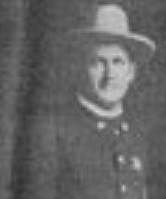
|
Henry W. Klaber - Assistant Chief
Okmulgee Police Department November 15, 1908
On Sunday, November 15, 1908, Jimmy Grayson had filed a complaint against a black gunsmith named Newt Decker over an argument about a day’s catch of fish. Okmulgee Assistant Chief of Police Henry Klaber and two brothers, Ralph, and Felix Chapman, who were deputized to assist Chief Henry Klaber, went to Newt Decker’s house at Second and Creek Street with Jimmy Grayson. As the men approached the house, Newt Decker, an expert shot, ran out shooting with guns in both hands. Assistant Chief Henry Klaber was shot in the throat and died soon after.
The Chapman brothers ran to Assistant Chief Henry Klaber’s aid, firing at Newt Decker with the fallen chief’s gun. Newt Decker shot and killed both Chapman brothers, Ralph, and Felix, then ran back into his house.
Okmulgee Chief of Police Dick Farr rode up on his horse and tried to assist the fallen Henry Klaber. Newt Decker shot Chief Dick Farr in the right shoulder. Chief Farr took a shot at Newt Decker with his left hand and felt he struck Decker because he saw him whirl around as he fired. Undaunted, Newt Decker fired again wounding Chief Dick Farr again in his left arm.
Sheriff William Edgar Robinson, the first elected Sheriff of Okmulgee County, arrived on the scene and was soon also shot dead by Newt Decker.
Other officers responded and the gunfight lasted over an hour with over five hundred shots being fired. Two other officers were wounded in the shootout as well as three bystanders. The officers finally set the house next to Newt Decker’s on fire. The fire spread to Newt Decker’s house. As Newt Decker came to the door he was shot and fell back inside the house to burn to death.
Assistant Chief Henry Klaber, thirty-nine, was survived by his wife Luella and four children and is buried in Okmulgee Cemetery, Okmulgee, Okmulgee County, Oklahoma.
OLEM – 8S-1-1 NLEOM – 23E23
Updated November 5, 2023
|
|
|
|
|
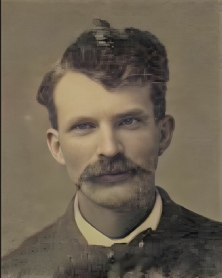
|
Bolivar Thornton "Doc" Knight - Deputy Sheriff
Seminole County Sheriff’s Office July 27, 1912
Bolivar Thornton Knight was born September 26, 1881, in Cooke County, Texas to James Jefferson and Amanda Melvina (Nichols) Knight.
Bolivar Knight married Malinda Ann Kesterson in 1900.
About 4 a.m. the morning of Saturday, July 27, 1912, a group of five Seminole County deputies were concealed in the woods on the Little River near Sasakwa attempting to catch bootleggers. They had a rope stretched across the road to halt traffic when two black men in a buggy came down the road. When the horses hit the rope, they stopped abruptly, throwing the two men out of the buggy. A gunfight ensued and Deputy Sheriff Bolivar “Doc” Knight was killed by a shotgun blast.
The suspects, Sancho Barkus and Martin Davis, escaped but were later located. Sancho Barkus died of wounds received in a shootout with Deputy Sheriff D. A. Marlow when Marlow attempted to arrest Barkus.
Martin Davis was arrested in St. Louis, Missouri, returned to Seminole and convicted of Deputy Sheriff Bolivar “Doc” Knight’s death.
Deputy Bolivar “Doc” Knight was survived by his wife Malinda and five children, Martha Melvina, 8, Iva, 6, Oral C, 3, and Willie Pierce, 1. Malinda Knight was pregnant with Bolivar Thornton Knight, Jr. when her husband was killed. Bolivar T. Knight, Jr. was born January 20, 1913.
Deputy Bolivar Knight and is buried in Egypt Cemetery, Ada, Pontotoc County, Oklahoma.
OLEM – 8S-1-25 (D Knight) NLEOM – 39E34
Updated July 3, 2024
|
|
|
|
|
|
James Merritt Knight – Constable
Santa Fe Railroad Police February 22, 1912
Joseph Kroskey was born at Hofa’s Park near Pulaski, Wisconsin about 19
Joseph Kroskey was hired as a Special Detective by the Santa Fe Railroad in 1911 in Topeka, Kansas. In January 1912, he was transferred to Guthrie, Oklahoma.
The evening of February 22, 1912, two negro men committed an armed robbery in Perry. Perry officers advised Guthrie Police that the suspects were on a train due into Guthrie about 11 p.m. Three Guthrie officers enlisted Detective Kroskey’s assistance to meet the train and search it. About 11 p.m. on the three Guthrie Police Officers and Special Detective Joseph Kroskey met the train coming in from Perry. The officers saw the two men get off the train. When the officers called for them to stop the two men ran. One of the fleeing men, Denise Alexander, was apprehended by the other officers. Detective Joseph Kroskey fired two shots at the other fleeing suspect and the suspect fired two shots back at the detective. One of the fleeing suspect’s bullets fatally wounded Special Detective Joseph Kroskey when it pierced his aorta. The fleeing suspect was tracked and indications were that he got on a south bound train to Oklahoma City. The other suspect, Denise Alexander, had named his accomplice as Jim Pearson. Guthrie officers notified Oklahoma City Police and Jim Pearson was arrested by Oklahoma City Chief of Police Bill Tilghman the next day.
The forty-year old Special Detective Joseph Kroskey was single.
Joseph Kroskey’s body was returned to Green Bay, Wisconsin for burial by his sister. The burial site of Special Detective Joseph Kroskey or Kruskey is unknown.
OLEM – 5N-5-7 NLEOM – 49W28
Updated February 20, 2024
|
|
|
|
|
|
Joseph M. Kroskey - Special Officer
Santa Fe Railroad Police February 22, 1912
Joseph Kroskey was born at Hofa’s Park near Pulaski, Wisconsin about 19
Joseph Kroskey was hired as a Special Detective by the Santa Fe Railroad in 1911 in Topeka, Kansas. In January 1912, he was transferred to Guthrie, Oklahoma.
The evening of February 22, 1912, two negro men committed an armed robbery in Perry. Perry officers advised Guthrie Police that the suspects were on a train due into Guthrie about 11 p.m. Three Guthrie officers enlisted Detective Kroskey’s assistance to meet the train and search it. About 11 p.m. on the three Guthrie Police Officers and Special Detective Joseph Kroskey met the train coming in from Perry. The officers saw the two men get off the train. When the officers called for them to stop the two men ran. One of the fleeing men, Denise Alexander, was apprehended by the other officers. Detective Joseph Kroskey fired two shots at the other fleeing suspect and the suspect fired two shots back at the detective. One of the fleeing suspect’s bullets fatally wounded Special Detective Joseph Kroskey when it pierced his aorta. The fleeing suspect was tracked and indications were that he got on a south bound train to Oklahoma City. The other suspect, Denise Alexander, had named his accomplice as Jim Pearson. Guthrie officers notified Oklahoma City Police and Jim Pearson was arrested by Oklahoma City Chief of Police Bill Tilghman the next day.
The forty-year old Special Detective Joseph Kroskey was single.
Joseph Kroskey’s body was returned to Green Bay, Wisconsin for burial by his sister. The burial site of Special Detective Joseph Kroskey or Kruskey is unknown.
OLEM – 5N-5-7 NLEOM – 49W28
Updated February 20, 2024
|
|
|
|
|
|
Mark Kuykendall - Posse, Deputy U.S. Marshal
U.S. Marshal Service January 17, 1887
On Monday, January 17, 1887, four lawmen, Deputy U.S. Marshal John Phillips and his three posse, William Kelly, Mark Kuykendall, and Henry Smith, were making a sweep of the Indian Territory serving numerous arrest warrants and had arrested Seaborn Green (also known as Kalijah) an eighteen-year-old Creek Indian who was wanted on a federal warrant for selling whiskey in the Indian Territory. After the arrest, the lawmen established a campsite near Hillabee (twenty miles northwest of Eufaula near present Stidham), I.T. Deputy Marshal John Phillips left his three posse in charge of Seaborn Green while he returned to Eufaula on business.
The three possemen agreed to take turns watching the prisoner during the night. William Kelly drew the first watch. Sometime during the night, either Posse William Kelly fell asleep or was surprised by Seaborn Green who had obtained the camp axe. Posse William Kelly was struck in the neck by the axe, with his head almost severed. Seaborn Green then used the axe on Posse Mark Kuykendall and Posse Henry Smith striking them both in the head killing them. Seaborn Green then piled logs around the bodies and set fire to the bed clothing and logs to burn the bodies.
The following day Deputy Marshal John Phillips returned to the gruesome site at the camp. His entire posse was dead, and Seaborn Green was gone. Deputy Marshal John Phillips discovered that all weapons had been taken from the camp. Deputy Marshal John Phillips buried his fellow lawmen near the campsite and then went in search of Seaborn Green.
For the next eleven days Deputy Marshal John Phillips looked for Seaborn Green. Deputy Marshal Phillips finally located and arrested Seaborn Green on January 28th. Seaborn Green tried to claim it was an unknown person who had entered the camp and killed the three posse. At his trial held in Fort Smith on July 13, 1887, Seaborn Green was found guilty of three counts of murder after he admitted he had committed all three murders alone. Seaborn Green was sentenced to death by hanging and the sentence was carried out on October 7, 1887, when he was hung on the U.S. Courthouse property.
The exact original burial site of Posses William Kelly, Mark Kuykendall, and Henry Smith, near present day Stidham is unknown however at some point the body of Posse William Kelly was disinterred and buried in the Buffington Cemetery, Sallisaw, Sequoyah County, Oklahoma.
William Kelly, who lived in Fort Smith, Arkansas, was survived by his wife to whom he had been married only a short time.
Mark Kuykendall lived in Yell County, Arkansas and Henry Smith lived in the Indian Territory.
OLEM – 4S-1-7 NLEOM – 42W8
Updated July 3, 2024
|
|
|
|





